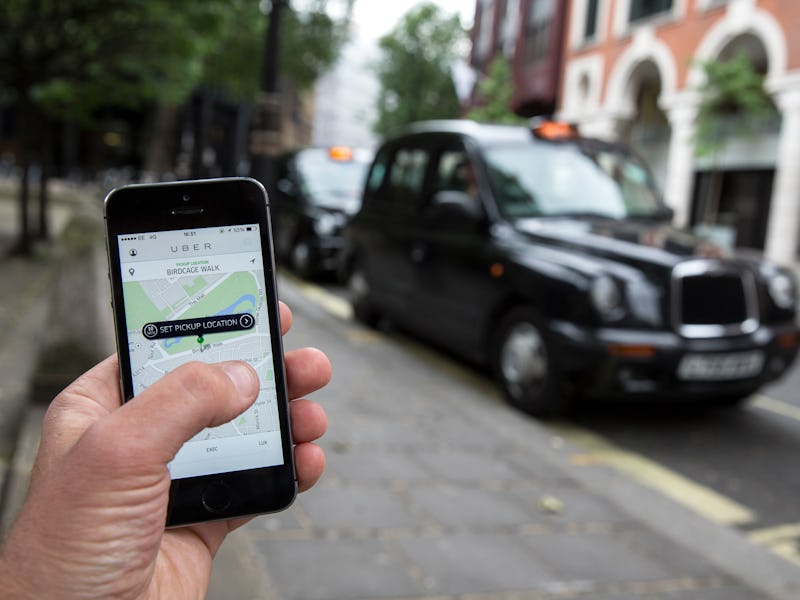3 Surprising Ways Uber Collaborates With the Government
Uber's transparency report shows just how much information they hand over.

Uber released its first-ever transparency report today, which details the information that Uber submitted to government regulatory and enforcement agencies between July and December 2015.
The largest ride-sharing company in the United States received 415 requests from law enforcement, 33 requests from regulatory agencies, and 34 requests from airports during the last six months of last year, and in the report, Uber breaks down just how open it submits passenger and driver data to the government — whether it be regulatory agencies or law enforcement.
“The report shows that we comply with the majority of law enforcement requests, while ensuring they go through the proper legal process, as stated in our updated public guidelines,” Uber announced in a corresponding blog post published today. “It also shows the scale of the regulatory requests Uber received: 33 in the last six months of 2015 involving trip data for more than 12 million drivers and riders.”
Uber isn’t the first technology company to release a transparency report of company interactions with the government, but it is the first to include regulatory requests. Uber’s security has repeatedly come into question this year after a driver in Kalamazoo, Michigan, allegedly killed six people in February, the rollout of a “Critical Safety Response Line,” and the removal of the company’s “safest rides on the road” ads.
In light of Uber’s reputation, the report highlights interesting information about its relationship with government agencies.
How Uber’s responds to law enforcement requests
State and federal law enforcement requested information from Uber 415 times regarding the accounts of 408 Uber passengers and 205 Uber drivers (in many cases the requests sought information about multiple people). Around 85 percent of these requests resulted in the law enforcement agency receiving some sort of data, but Uber only fully complied with the requests 32 percent of the time. It submitted partial information around 53 percent of the time, and requests were either withdrawn or there was no data to submit for around 15 percent of the requests.
Uber handles law enforcement requests differently in emergency situations than non-emergency situations. In the latter, Uber requires legal process before they submit information. In situations with an “imminent threat of harm,” Uber may send information before the legal processes have been completed.
“In those cases, we require law enforcement to follow up with the appropriate legal process for the information provided,” Uber wrote in the report. “We also proactively refer matters to law enforcement when we believe that a rider or driver is engaged in criminal activity while using the Uber app or posing a threat to a rider, driver or our business.”
Many of the requests that Uber receives are in regards to fraud and stolen credit cards.
How Uber limits requested information
Uber stated that it tries to limit the information provided to government agencies if it believes that the request is overly vague.
For law enforcement, Uber limits the scope of requests or rejects the request if it does not meet the legal requirements. The report states that law enforcement requests “must be narrowly tailored to a legitimate law enforcement need.”
For government regulatory agencies such as taxi commissions and public utility regulators, Uber may take the agency to court if it believes the request is overly broad, or commercially/personally sensitive. Regulators don’t always tell Uber what exactly they need the data for, and once the data is in regulatory hands, it could be released to the public. In these cases, Uber tries to take the heat off of their responsibility.
“For instance, this data can be exposed when regulatory agencies receive freedom of information requests and respond by producing data we shared with them,” reads a statement from Uber. “In addition, agencies occasionally inadvertently disclose the confidential information in their possession.”
Why Uber has to deal with government regulatory agencies
Uber reports that 33 data requests were submitted by regulatory agencies from July to December 2015. Everything from number of passengers to GPS coordinates were requested. Uber has to deal with regulatory agencies because “they are empowered by law to require [Uber] to report information about their operations.” Regulators need to identify patterns of behavior to help government make new laws that protect and serve the population.
Read the full report at transparencyreport.uber.com